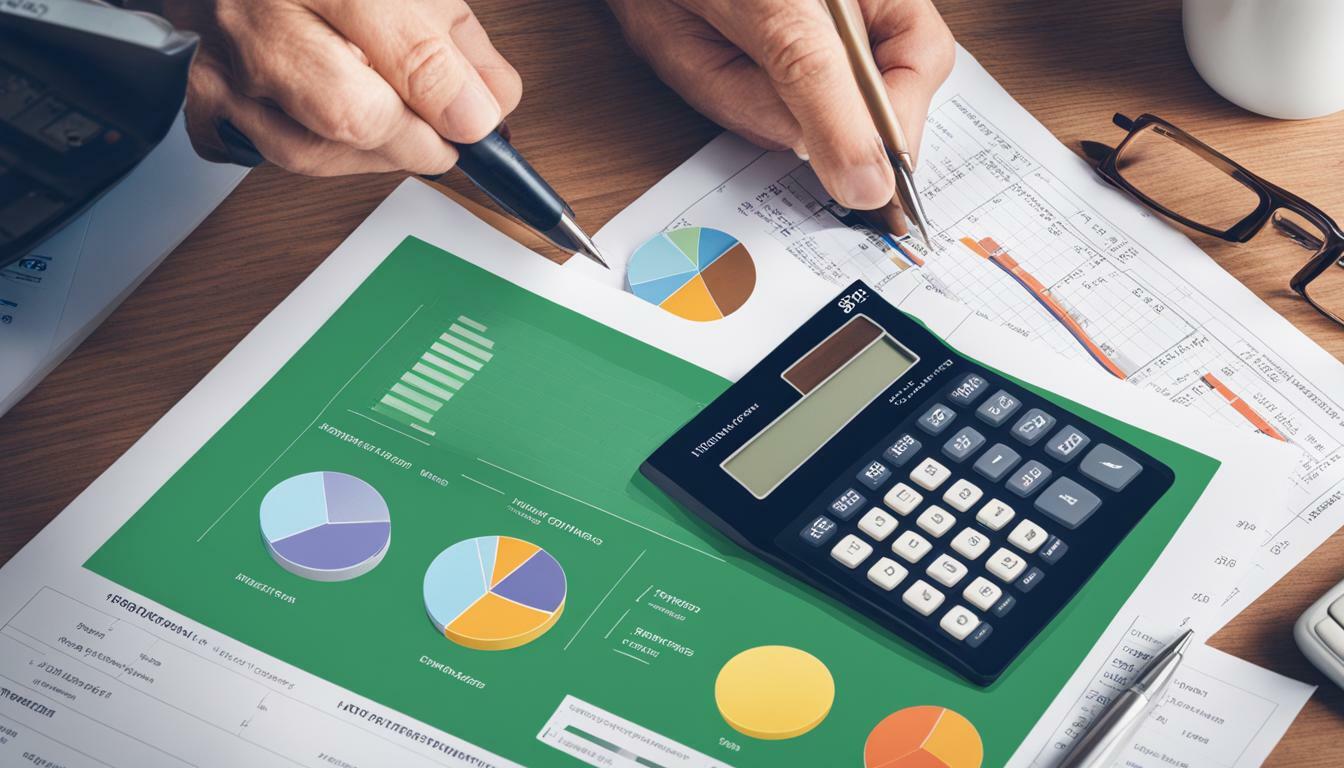Welcome to our comprehensive guide to managing receivables in business. Understanding receivables is crucial for the financial success of any business, and effective receivables management is essential to maintaining a healthy cash flow and profitability. In this guide, we will explore the definition of receivables, their importance in business, key strategies for managing them, technology solutions for streamlining receivables management, and how to analyze receivables through metrics and reporting. By the end of this guide, you will have the knowledge and tools necessary to optimize your receivables management and achieve greater financial success.
Key Takeaways
- Understanding receivables is essential for the financial health of any business.
- Proper receivables management can impact cash flow, profitability, and overall business operations.
- Effective receivables management involves setting credit policies, efficient invoicing and collection processes, and utilizing technology solutions.
- Technology plays a crucial role in receivables management, and there are various software solutions and automation tools available.
- Analyzing receivables through meaningful metrics and reporting is essential for evaluating performance and identifying areas for improvement.
What Are Receivables?
Receivables are the amounts that your business is owed by customers or clients for goods or services provided but not yet paid for. Essentially, they represent an asset or a claim to future cash inflows that your business is entitled to receive in exchange for its products or services. Understanding the different types of receivables is crucial for effective management strategies.
Types of Receivables
There are various types of receivables that exist in business:
| Type of Receivable | Description |
|---|---|
| Accounts Receivable | The most common type of receivable. It refers to the money owed by customers for goods or services that have been sold on credit and are due for payment within a short period, usually less than 90 days. |
| Notes Receivable | These are receivables that arise from loans or financing transactions where a promissory note is issued as evidence of debt. The note specifies the payment terms, interest rate, and due date for the loan. |
| Trade Receivables | These are the receivables that arise from business transactions with other companies, such as suppliers or distributors. Trade receivables can include accounts or notes receivable for goods or services provided in the normal course of business. |
Understanding the types of receivables is crucial for developing effective management strategies, as each type requires different approaches for timely collection and management.
Now that we have defined and explored the different types of receivables, let’s delve into the significance of managing receivables in business operations in the next section.
The Importance of Managing Receivables in Business
At its core, managing receivables is about ensuring that your business receives payment for the goods or services it has provided to customers. However, there is much more to it than simply collecting payments. Receivables management also involves setting credit policies, invoicing customers on time, tracking and following up on outstanding payments, and analyzing performance data to identify areas for improvement.
The importance of effective receivables management cannot be overstated. Proper management of receivables impacts your cash flow, profitability, and overall business operations. Without adequate cash flow, your business may struggle to cover its expenses, invest in growth opportunities, or pay off debt. Similarly, without a strong focus on profitability, your business may find it difficult to stay competitive in your industry.
By understanding receivables and implementing effective management strategies, your business can optimize its cash flow, enhance profitability, and achieve long-term financial success. Even small improvements in receivables management can have a significant impact on your bottom line.
Key Strategies for Effectively Managing Receivables
Managing receivables is crucial for any business, and optimizing the process can make a significant difference in cash flow, profitability, and overall financial success. Here are some key strategies that can help effectively manage receivables:
Set Clear Credit Policies
A clear credit policy is essential for managing receivables effectively. Clearly define your payment terms and ensure that customers are aware of them before agreeing to any transactions. Establish a process for assessing and approving credit for new customers, including credit checks and references. By setting clear policies, customers will understand what is expected of them and be more likely to comply with payment terms.
Implement Efficient Invoicing and Collection Processes
Efficient invoicing and collection processes are critical for managing receivables effectively. Ensure that your invoices are accurate and delivered promptly to customers, and provide clear information on payment terms and instructions. Implement a follow-up process for any late payments, including automated reminders and escalation processes. By being proactive in your collections process, you can improve cash flow and reduce the risk of uncollectible accounts.
Maintain Accurate and Up-to-Date Records
Accurate and up-to-date records are essential for effective receivables management. Implement a system for tracking invoicing and collections activity, including customer information, payment history, and outstanding balances. Regularly review and reconcile your records to ensure that they are accurate and up-to-date. By maintaining accurate records, you can quickly identify any issues and take action to resolve them.
Manage Customer Relationships
Managing customer relationships is an essential part of effective receivables management. Foster collaboration and open communication with your customers to understand their needs and concerns. By maintaining strong relationships, customers are more likely to prioritize payments and work with you to resolve any issues.
In conclusion, effectively managing receivables requires a combination of clear policies and processes, accurate record-keeping, and strong customer relationships. By implementing these key strategies, you can optimize your receivables management and improve your financial performance.
Technology Solutions for Streamlining Receivables Management
As we’ve previously discussed, managing receivables is critical to financial success in business. In today’s digital age, technology plays a crucial role in streamlining receivables management. Implementing the proper technology solutions can help optimize processes, reduce errors, and ultimately speed up cash flow.
One of the most valuable technology solutions for receivables management is invoicing software. With invoicing software, you can easily create and send professional invoices to clients. Many invoicing software programs come equipped with automation features like recurring billing and automatic payment reminders, which help save time and reduce errors.
Another valuable technology solution is customer relationship management (CRM) software. CRM software allows you to track customer transactions, manage contacts, and follow up on overdue payments. By centralizing customer data and creating a clear audit trail, CRM software helps reduce errors and improve communication with clients.
Lastly, payment processing software is an essential technology solution for managing receivables. These software programs allow you to securely process payments online and in-person, reducing the risk of errors and fraud. Many payment processing options offer integration with other software solutions, like invoicing and accounting software.
Choosing the Right Technology Solution for Your Business
With so many technology solutions available, it can be challenging to determine the right fit for your business. The key is to evaluate your needs and find a solution that fits your budget and level of expertise. Consider factors like cost, ease of use, integration with other systems, and level of support when choosing a technology solution.
- Do you need a standalone system or one that can integrate with other software?
- What is your budget for a technology solution?
- How much experience do you have with technology solutions?
By answering these questions and doing your research, you can find the right technology solution to streamline your receivables management and improve your bottom line.
Analyzing Receivables: Metrics and Reporting
As we’ve discussed, managing receivables is essential for the financial well-being of a business. However, it’s equally important to analyze this data to gain insights into how your business is performing. By leveraging the data from your receivables, you can identify trends, measure performance, and ultimately make better-informed decisions.
Key Performance Indicators (KPIs) for Receivables
Before you can analyze your receivables, you need to know what to measure. There are a few critical metrics that are important to track:
| KPI | Description |
|---|---|
| Days Sales Outstanding (DSO) | The average number of days it takes to collect payment after a sale. |
| Collection Effectiveness Index (CEI) | An efficiency metric that measures how well your business is collecting outstanding debts. |
| Bad Debt Ratio | The percentage of accounts receivable that are written off as bad debts. |
| Customer Concentration | The percentage of your business that is made up of a small number of customers. |
By tracking these KPIs, you can gain valuable insights into your receivables management and identify areas for improvement.
Reporting Tools for Receivables
After you’ve identified the KPIs that matter most to your business, you need to ensure that you have the tools in place to track and report on these metrics. There are several reporting tools available that can help you analyze your receivables data, including:
- Accounts Receivable Aging Reports
- Cash Flow Statements
- Debt-to-Equity Ratios
- Profit and Loss Statements
By regularly reviewing these reports, you can stay on top of your receivables performance and adjust your strategies as necessary.
Ultimately, by analyzing your receivables data, you can make informed decisions that drive business growth and financial success.
Other Topics on Receivables Management
- How to Collect Receivables Faster in 2023
- How To Manage Accounts Receivable In QuickBooks
- How To Start An Accounts Receivable Business
- 5 Tips for Small Business Accounts Receivable Management
- Cost Associated With Receivables Management
- How Much Does An Accounts Receivable Manager Make
- How to Efficiently Manage Your Business Accounts Receivables
- Role of Artificial Intelligence in Receivables Management
- How Blockchain Technology is Transforming Receivables Management
- Future of Receivables Management
- Protecting Your Business Against Receivables Fraud
- How to Handle Delinquent Accounts: A Legal Perspective
- Legal Aspects of Managing Receivables
- Technological Tools for Streamlining Receivables Management
- The Role of Receivables Management in Cash Flow
- 10 Best Practices for Effective Receivables Management
- How to Calculate and Analyze Accounts Receivable Aging
- Strategies for Improving Accounts Receivable Turnover
- Understanding Accounts Receivable: A Beginner’s Guide
- Effective Strategies for Receivables Collection
- An Introduction to Receivables Financing
- Accounting for Receivables: A Comprehensive Guide
- 5 Best Free Accounts Receivable Software for Small Business
- 10 Best Accounts Receivable Management Software for Small Business
Conclusion
In conclusion, we hope this comprehensive guide has provided valuable insights into managing receivables in a business. Understanding the different types of receivables and the importance of managing them can significantly impact your cash flow and overall financial success.
Implementing key strategies such as setting credit policies, ensuring efficient invoicing and collection processes, and leveraging technology solutions can help streamline and simplify your receivables management. Additionally, analyzing receivables using meaningful metrics and reporting tools can provide valuable insights into your performance and areas for improvement.
By optimizing your receivables management, you can enhance your cash flow, profitability, and overall business operations. We encourage you to use the tools and strategies discussed in this guide to thrive brilliantly in your industry.
Thank you for reading.


